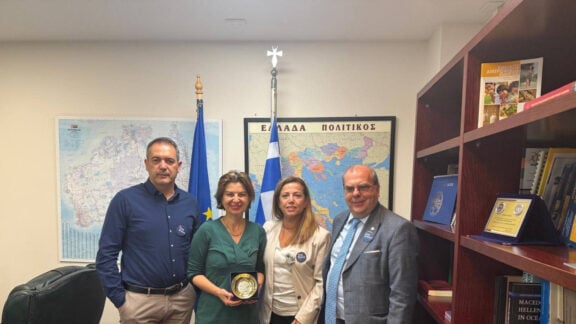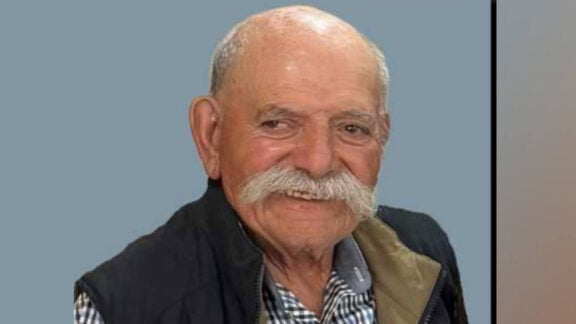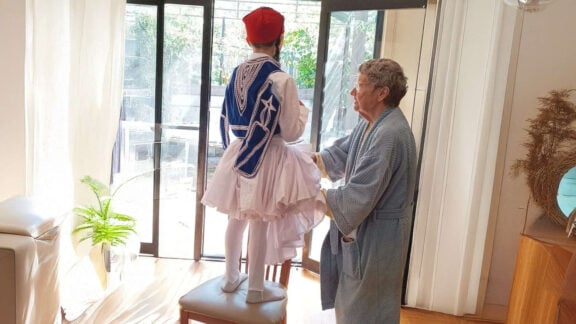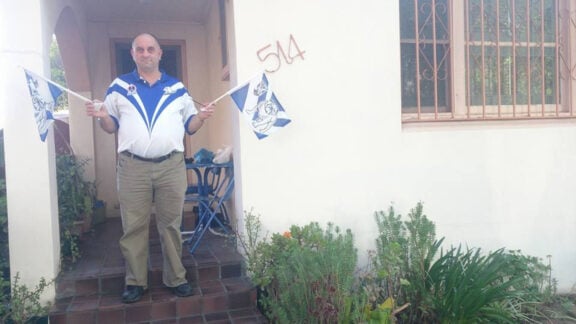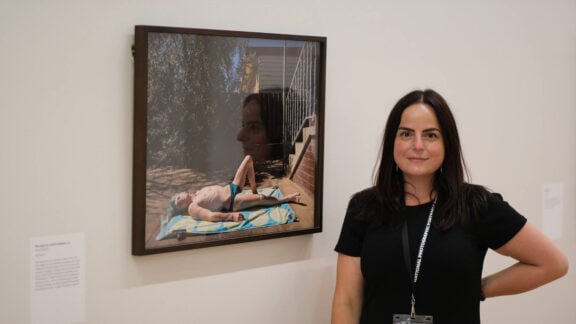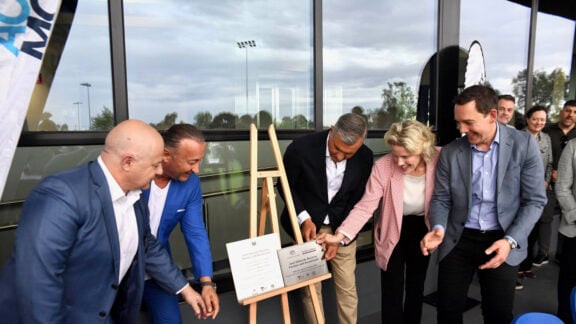Little has changed in the Panagia Hozoviotissa Monastery on the island of Amorgos since it’s founding over millennium ago, and for more than 50 years, Spyridon Denaxas has prayed, worked and welcomed the faithful to the island monastery.
When the recent earthquakes in the region happened, Father Spyridon, as he’s affectionately known, was away for a medical emergency.
When he heard about all he could think about was making his way back to Amorgos.
“I wanted to be here with my community, feel their emotions, because I’m responsible. God put me here to care for them,” he said in an interview with The Associated Press at the monastery.
But he said not even a rock fell during the tremors.
During his brief absence, and another last year (his longest ever) when he was gone five months for surgeries on the mainland, the whole island, even atheists speculated when he would be back.
“He’s part of the island,” said Mina Mavrou.
Even when he was away for knee and dental surgeries, islanders called him often to ask about his recovery and receive his blessing.
It was a nearly eight-hour ferry trip from Athens but once settled back he was elated.
“I feel spiritual euphoria having met the people of the village again, those who were searching for me and missed me,” he said.
“I am overjoyed with the monastic life and my return to my natural environment.”
The story behind the whitewashed monastery in the cliffside is Byzantine monks, who were fleeing persecution in the Middle East in the 9th century, sailed to the island with an icon of the Virgin Mary.
They were building a shelter in a cave when falling rocks revealed a chisel hanging farther up the cliffside.
They took it as a sign and spent the next decades constructing the monastery that sits more than 150 metres above the sea.
Spyridon, who was born on Amorgos, joined the monastery in 1971, when he was 18 and straight out of high school.
He is one of two monks there, plus an assistant, 35-year-old Constantin Papakonstantinou, who hopes one day to join them.
Papakonstantinou teaches visitors the history of the location, in various languages he learned during his previous career in fashion.

These visitors have to climb 300 metres of steps before squeezing through the tiny entrance door, and climbing again a narrow staircase to the dark chapel.
There, they pay homage to the icon before stepping onto the terrace where they can view the sea.
Michalis Giannakos left Amorgos after high school 20 years ago, but remembers visiting the monastery as a child and seeing Spyridon going up and down the rocky slopes, tending to animals and greeting pilgrims.
“Spyridon was there taking care of people, making sure people visiting were happy,” Giannakos said.
On name days Spyridon calls people with congratulations. If it’s a popular name he makes dozens of calls, starting before dawn to catch those in Australia or the Americas.
The monastery gave some of its land to build a school said Giannakos, and hosts most of the population during its feast days in November.
Spyridon is content with staying in Amorgos and the monastery, to take care of his “own courtyard” and he knows the importance of nature.
“It is in my DNA, intertwined with the monastery and its existence,” he said.

